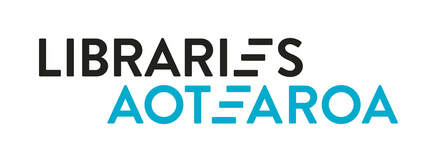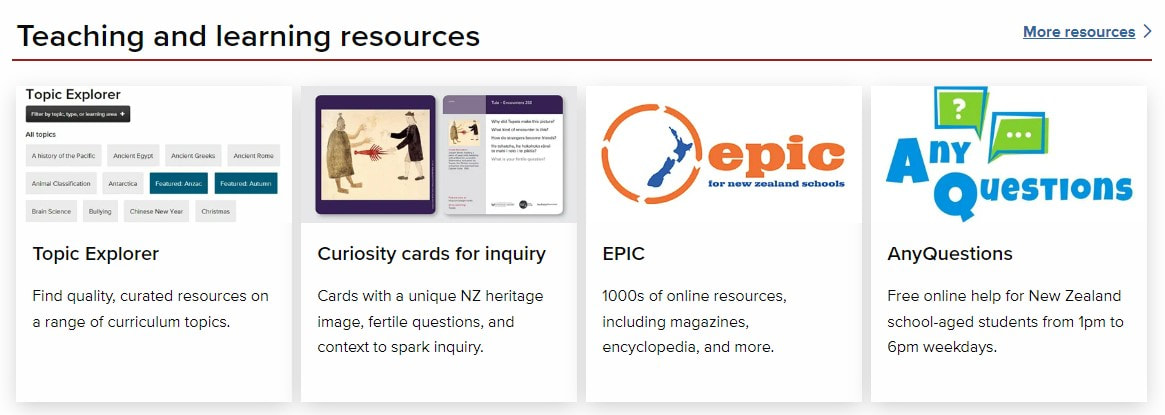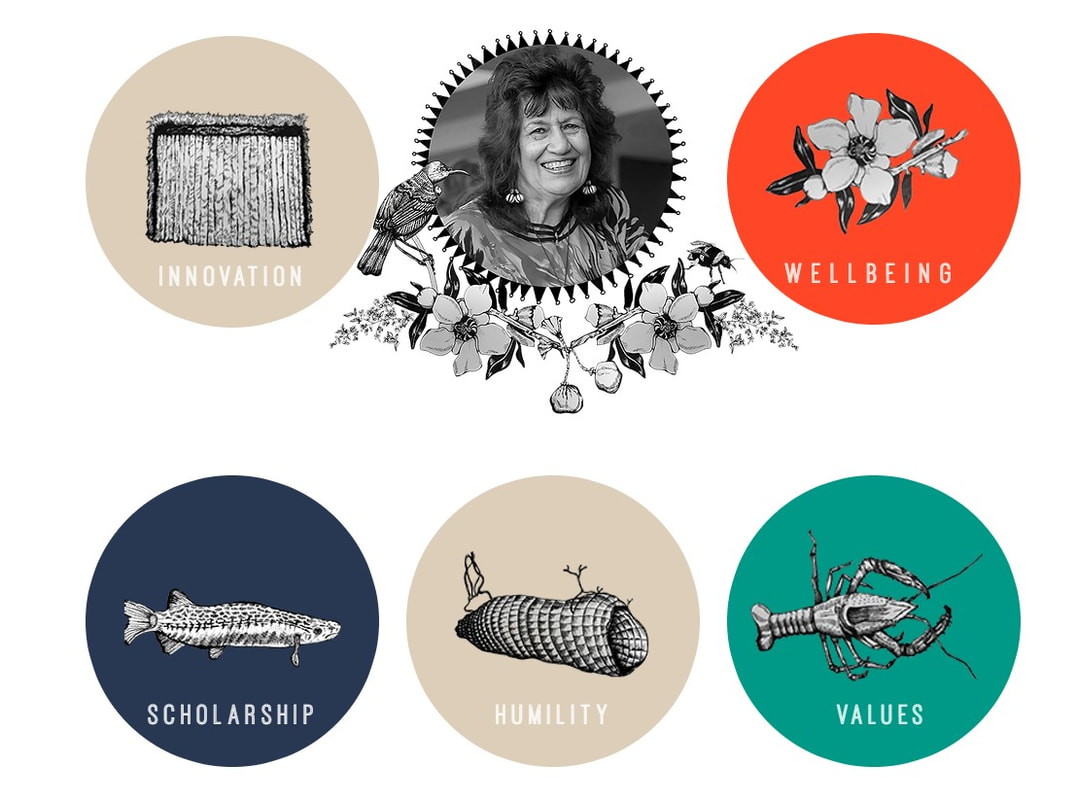There are initiatives occurring over the country to assist teachers and ākonga (students) and the ways some library and heritage services are supporting these new curriculum changes are highlighted in this article.
Samuel Beyer is the Project Manager Curriculum at the National Library of New Zealand Te Puna Mātauranga o Aotearoa. He works with the Services to Schools team to support access to a range of teaching and learning resources, including Lending Service for schools, Tuia Mātauranga, Te Kupenga: Stories of Aotearoa, and Topic Explorer. Topic Explorer helps ākonga find quality, curated resources on a range of topics. Each topic features a carefully selected set of national and international resources, including websites, images, videos, books, and more.
Aotearoa New Zealand’s history has been a big focus of Service to Schools recently and the team has looked at their collections to see what resources already meet the needs of the new curriculum and where the gaps may be. They are working with other areas of the National Library, including the Alexander Turnbull collections, and also Archives New Zealand, and Ngā Taonga Sound and Vision to identify relevant collection items that could be digitized and made accessible to schools.
Local libraries are important to this discussion as the curriculum requires students to explore their local history, and this means access to local curation sources is needed.
Samuel says, that while schools are going to be working with the new curriculum from 2023, they don’t need to embed everything straight away, but will have three years to implement it into their overall school curriculum. To support this implementation, he encourages libraries to think about a traffic light framework and take a planned approach to identify and make available collection items that could support the Aotearoa New Zealand’s histories curriculum:
- Green light – look at what collection items are already easily accessible by schools, teachers and ākonga
- Orange light - what relevant collection items could be digitized and made accessible relatively easily?
- Red light – what useful collection items could be made more accessible but will take more effort or longer to do so?
“We’ve just started providing professional development in the history curriculum area to support library staff,” says Samuel. Part of this is unpacking the curriculum for them and what it might mean for resourcing. While focused on school librarians, this professional development is also open to public librarians.
Samuel says that with the new curriculum there are clear indications of the key knowledge that schools will be covering. It provides a road map of how libraries can be approaching this area. “I think any local library could discuss this with their local schools and see what their resource needs are.” But he encourages taking a planned approach, working out what you have the capacity for, and working alongside others in this area such as schools, local museums, and possibly iwi.
Another valuable resource to support the new curriculum is the AnyQuestions/Many Answers service provided by the AnyQuestions team managed by Services to Schools at National Library of New Zealand Te Puna Mātauranga o Aotearoa.
AnyQuestions is an online chat service offering help to students with their questions on weekdays from 1-6pm, supporting them develop their digital literacy skills in the process.
The Many Answers site guide inquirers to where resources are and are developed based on the questions being asked of the AnyQuestions chat service, with over 200 curated topics on the site.
Amy Jacob is responsible for managing this service and the local library partnerships that support the service. Seventeen public libraries partner with Services to Schools to run AnyQuestions and Many Answers, and SLANZA is an associate partner. There are close to 200 staff involved from Wellsford to Invercargill and all staff receive a two-day introductory training and then a yearly refresher training.
Included in Many Answers are topics related to New Zealand histories which provide a general overview of the topic. The AnyQuestions Histories Programme focuses on themes in the new curriculum and local resources.
AnyQuestions Histories Programme
The AnyQuestions Histories Programme consists of three projects that involve creating entries that introduce students to local information sources, explain how to access them, and help students develop information literacy skills, which will support them to think critically about the past – a key feature of the Aotearoa New Zealand’s histories curriculum. These entries will be published on the AnyQuestions website.
The three projects are:
- Many Answers Regional Resources Project: This project involves partner libraries developing local Many Answers entries for 9 of the 10 Ministry of Education areas.
- Auckland Libraries Many Answers Project: This involves the development of multiple Many Answers entries based on each of the curriculum themes to cover Tāmaki Makaurau.
- SLANZA Many Answers Project: This project involves school librarians developing entries for Te Tai Tokerau. They will also be running user-testing workshops with students and conducting an impact study. This project is funded by one of the New Zealand Libraries Partnership Project (NZLPP) strategic partnership grants.
The entries will bring local collections to one site. Students can decide how they will use the information based on what they’re learning at school. “We’ve encouraged libraries to work out what relationships they already have, such as with iwi and through councils, to help develop their knowledge of information sources, especially on mātauranga Māori,” says Amy Jacob.
Thanks to NZLPP funding, Auckland Libraries partnered with the Auckland History Initiative and the Services to Schools AnyQuestions team on a recent project to publish entries on the Many Answers platform. The entries link content from the Auckland Libraries’ heritage and published collections with topics covered in the curriculum in a format that makes local history content more accessible.
A subsequent project will create local history resource kits to support teachers in the delivery of curriculum topics. The work on the Many Answers content specific to the Auckland area is largely finished after a comprehensive audit of collections. A group of Many Answers operators trained by the Services to Schools team completed entries aimed at Year 7 and 8 students.
The Auckland Libraries Mātauranga Māori Unit, headed by Teri Ta’ala, are partners in this work. Erica O’Flaherty, Manager for Heritage Collections at Auckland Libraries says that conversations with the unit’s Poukōukiri Rangahau Māori are key to understanding how best to gather and select iwi-specific historical material appropriately.
“We’ve asked ourselves how we work in a way that makes sure that we meet the objectives of the project – and that we balance traditional knowledge frameworks with contemporary perspectives to develop research resources that deliver an accurate view of the Auckland context, where multiple viewpoints exist, such as the North Shore, where there is multiple Iwi with diverse historical perspectives,” says Erica. “The Mātauranga Māori unit supports how we engage in an appropriate way with Māori history and inform decisions on things that are important for this project.”
“We’re doing this work alongside wider GLAMMIR sector representatives in the region and the NZ History Teachers Association. Those relationships have been useful to us to make sure we know who is doing what and that we’re supporting each other.”
Auckland Libraries also have a partnership with Auckland University and Dr Linda Bryder, from the Auckland History initiative, which supports students over the summer trimester to research aspects of Auckland history. The research topics undertaken by the students connect to Auckland Libraries’ heritage collections and build relationships with Iwi and GLAM communities.
Auckland Libraries are already getting inquiries from teachers looking for resources for next year, despite the period of three years given by the Ministry of Education to embed the resources.
In addition to SLANZA’s partnership with Services to Schools in Te Tai Tokerau, SLANZA is involved with two Kāhui Ako pilots in Cambridge East (Te Kāhui Ako o Te Oko Horoi) and in Nelson (Waimea Kāhui Ako). These are both website development projects that will include regional professional development (PD) opportunities. This project is also funded by an NZLPP strategic partnership grant.
“A key role for school librarians is to support curriculum learning in the classroom. School librarians are in an ideal place to find the information to help teachers on the new history curriculum,” says SLANZA President Sasha Eastwood.
“All of our SLANZA regional committees will be looking at running local PD sessions to bring all the GLAMMIR sector together, so they know about what resources are out there. We’re in an ideal position to be a bridge between schools, museums, public libraries, iwi, records, archives and marae.”
SLANZA is currently working with the Ministry of Education to look at how school librarians can be supporting the new history curriculum further.
One area where there is no pilot or partner project is in the Tairawhiti area. Services to Schools are working on how they can make sure there is no gap in the local history content in this area.
In June 2022, Palmerston North City Library held an event “Ka Mua, Ka Muri”, meaning walking backward into the future, where heritage groups and historians offered resources and information to give teachers the tools to be able to teach the new curriculum. Groups included the New Zealand Rugby Museum, Te Awahou Nieuwe Stroom, the Manawatū Journal of History, and Te Pae Matauranga o Rangitāne.
Around 70 teachers from 24 schools attended. Organiser Virginia Warbrick said they recognised there were a lot of groups in the community with huge expertise in history so wanted to introduce them to teachers who may not have a history background.
Melissa Day is a teacher at Te Kura o Wairau in Palmerston North who attended the event and commented, “We're looking at local history and this is giving us some idea of how we can go about teaching local history, instead of just the overarching New Zealand stories.”
The library also coordinates the ‘Back Issues’ series of the Manawatū Standard – a weekly history-focused feature. They coordinate local writers to share different aspects of local history, with a strong visual element, and a recent focus on topics useful to local teachers in support of the new curriculum.
A pilot project led by the library called ‘My Migration Story’ is a recent addition. It matches primary school teachers with members of the local branch of the NZ Society of Genealogists with the general premise, “Can you teach other people’s migration stories if you don’t know your own?” The primary goals are to: learn how to use historical research tools and databases to determine a teacher’s own ancestors who were born in/or migrated to Aotearoa, use newly designed visual tools to help tell stories about their whānau’s migration story to and within Aotearoa, determine the location of family burial sites, and strengthen the connection to whenua and place.
Kirsty Wyndham is the school librarian/inquiry broker at Cambridge East Primary school in the Waikato. Kirsty is part of a SLANZA pilot programme in partnership with the Te Kāhui Ako o te Oko Horoi (Cambridge Community of Learning) to enhance the role of school librarians and showcase the impact an effective school librarian can have within their school. One of the goals of the programme is to provide a kete of historical resources on Cambridge and its surrounding areas.
A prototype website has been established in collaboration with the local museum and Iwi. This will provide teachers, kaiako, librarians and learning assistants within the kāhui ako with valuable and carefully selected local primary and secondary resources to support ākonga to be critical thinkers and understand their local past.
The website is based on three local themes: Shaping of a Landscape, King Taawhaio & Kiingitanga, and Building of a Town. More themes will be added over time. There are also links to historical information on local schools in the area.
The website provides multi-media links to podcasts, videos, paintings, images, biographies, and books covering local and national primary and secondary resources. These resources are all linked to Aotearoa New Zealand's histories and based on: Understand (big ideas), Know (contexts) and Do (inquiry practices). Teachers have access via a link to well-known resources from Digital NZ, EPIC, Papers Past, National Library, and Te Ara Encyclopaedia of New Zealand.
It is the beginning of a model and a journey where all parties involved can explore, discuss and debate together.
Te Aka Mauri’s focus has been on providing an engaging website as a resource to tell local stories and history. “You’re telling the stories of local iwi so our relationship with them is important – iwi are already partners in this information, and we work with a Mātauranga Māori advisor on this,” says Abigail Wharne Heritage and Research lead at Te Aka Mauri.
Te Aka Mauri is the custodian of the Great Te Arawa Stories (GTAS) website. GTAS contains a collection of stories about people, places, and events that are applicable to Rotorua and to the people of Te Arawa. It was developed by Ngā Pūmanawa e Waru Education Trust to introduce learners to Te Arawa stories, encourage user education skills, support inquiry learning, and inspire the exploration of existing resources.
“We’re working hard to improve access to our Māori resources, by ensuring pathways to this knowledge are informed by a Māori worldview. We are at the early stages of engaging with users to identify barriers to access. It has been a confronting, but a hugely necessary, first step in what we know will be an ongoing journey.”
Aural as well as written content on the site is informed by eight values: identity, diligence, relationships, innovation, wellbeing, scholarship, humility and values. “These are the values that guide Te Arawa learners,” says Abigail. Ultimately the GTAS content will be migrated to a new site.
“One of the things we’ve learned is that teachers value having pathways into information based on the curriculum, so we’re keeping the values and timelines but looking at how we can incorporate the structure of the curriculum as another pathway into those stories on the new site.” There will also be downloadable resources that teachers can use to support the stories on the site. During one feedback session, a teacher explained how they had been searching for a resource like this for years: high-quality narratives from a trusted local source.
Pathfinder handouts have been developed for different ages on the local history books available and the library is one of the partner libraries supporting the Many Answers regional project by providing links to Te Arawa and Rotorua history.
“The hardest thing to do was to limit the resources we included as there’s so much, we could have included,” says Abigail. The framework and training provided by the Many Answers project were very helpful in doing this.
MORE RESOURCES:
NZ History Teachers Association:
History curriculum content, view this link.








 RSS Feed
RSS Feed